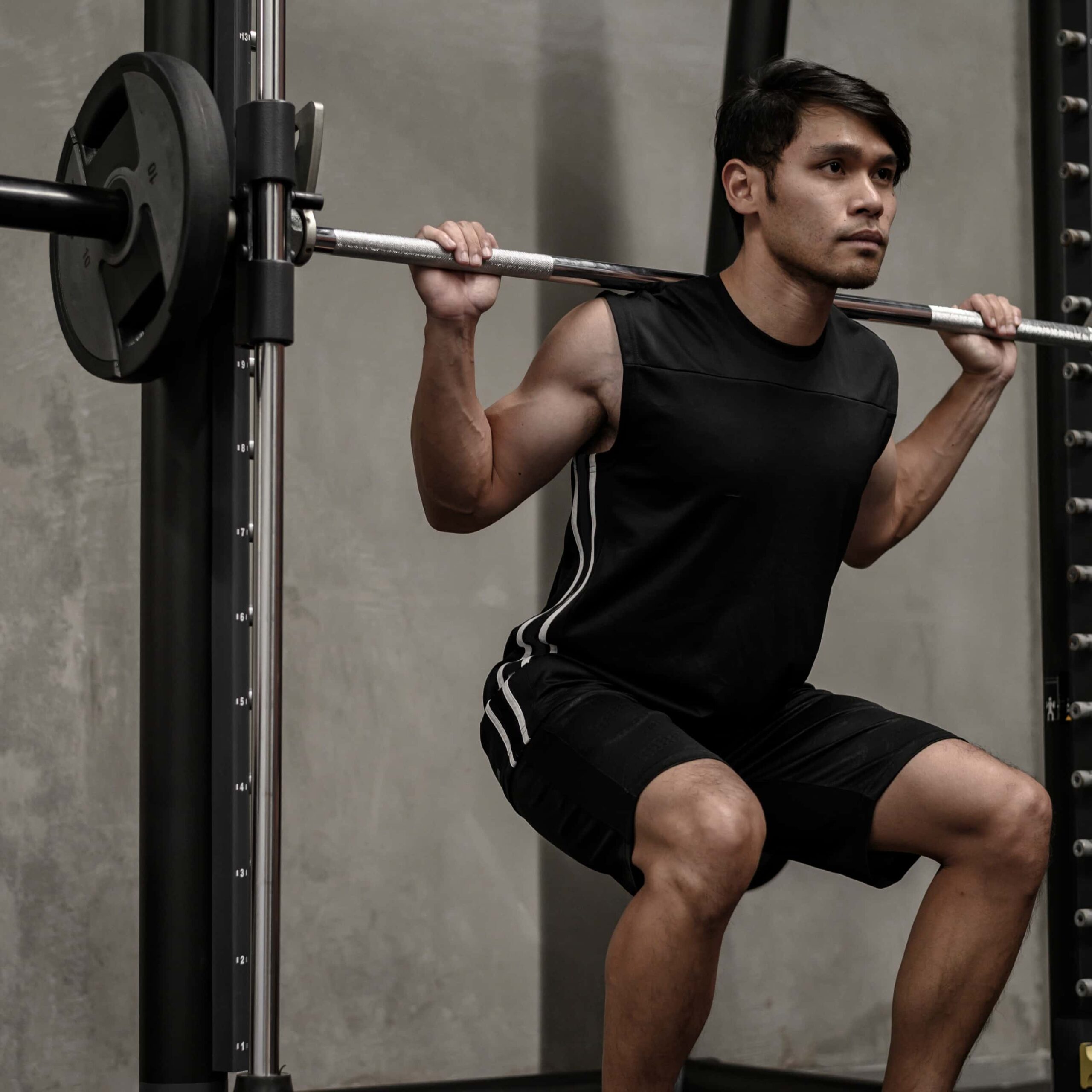Why and How to Warm Up and Cool Down With Exercise
20th Jan 20

Warming up isn’t a rare thing to hear about when it comes to exercise. We all know we need to do it, and yet still, a huge number of people just don’t. Whether it’s a lack of time, info, patience or anything in between, that has to be something you change if you’re really going to get the most out of your workouts and for a number of different reasons.
Without proper warming up and cooling off periods in your exercise, you’re opening up your body to a huge number of risks. It gets talked about for a reason, after all. Luckily too, there’s a huge number of different ways to go about doing it, so there really is no excuse.
We’ve put together some of the basic reasons all about how and why you need to be warming up so that you know just what you need to be doing and the effect that it will have on your body and your workouts in the long run, so that you don’t have to find it out the hard way. So let’s take a look.
Want to move fast? Jump to the right section below.
Why To Warm Up
It Gets the Blood Flowing

Firstly this will benefit the cardiovascular system. So even if you are doing a strength workout, 5-10 minutes of medium-intensity cardio exercise can be massively beneficial for your overall performance in the gym and your muscular well-being.
Anything that gets your blood flowing is a great choice. It fills your muscles with oxygen and means that you’re ready to make energy either anaerobically or aerobically for any kind of workout. So no matter how you intend to work out, you’ll give yourself a boost.
It Gets Your Muscles Prepared

On top of your awesome cardio benefits, it’s smart to start doing a little strength training in your warms ups, too, to make sure your muscles are primed to give you the motions you need without much shock.
Strength train with a set at 50% of the weight you were planning to use, for example, or even bodyweight squats before you run. These all ensure you’re firing on all cylinders, and you will be performing at the top of your game from the get-go.
Dynamic stretching is the preferred method of stretching over static for warming up because of how muscles respond to it, readying them for the challenge they’re about to face.
It Gets You Mentally Prepared

Warming up has mental effects as well as physical benefits too, which many of us don’t always remember. But, of course, exercise already has its mental benefits (like we looked at here), and getting yourself in the mindset for a great workout is always half of the battle you’re about to face, especially if you’re really pushing yourself.
Exercising releases endorphins responsible for us feeling happier during and after exercise, so they’re a great way to start a workout too. They get you hyped to keep up the good feeling throughout your workout and keep you more motivated generally!
How to Warm Up
Learning about why you need to warm up opens us up to one more thing in particular. that’s how to do it. Learning the best ways you can actually warm up is actually half the battle to getting a better workout and safer results, so it needs to know info.
Let’s look at what we’ve got.
How to Warm Up for Cardio
Let’s start by looking at how to warm up for cardio. Cardio is a huge category, as we know, and there are tonnes of different workouts you can do that are technically classed as cardio. Things are a little hazy. Despite that, though, there is a general rule you can follow, and it goes a little like this:
4 Dynamic Stretching Poses
This one is harder to pin down than many others, and that’s because you are spoiled for choice. There are more stretches out there than you can count, and finding the best, depends precisely on what you’re going to do. Make sure you’re using all of the muscles that the workout you’re going to do needs, especially things that are easy to pull. Things like walking lunges are a perfect example of using just about every muscle in your legs.
5 Minutes of Light Exercise
Whatever muscle group you’re going to be using in the workout, use it in another cardio exercise. It is that simple. If you’re going to run, then get walking for a few minutes or even incline walking and gradually work up your speed. It works for any cardio at all. Just drop the speed and get the blood flowing smoothly.
How to Warm Up for Weight Training
Weight training is a little different since there isn’t as much constant movement, and you’re taking breaks in your set. The exercise is totally different, and the work your muscles are doing is too. This is mostly anaerobic respiration, after all.
Localised Stretches
Again, it’s time for some local stretches. Use whatever muscle group you’re going to be focusing on in your workout, even if it’s compound. You can’t be too safe, so try 2-3-4 different stretches for the best possible results!
Light Sets
The best place to start is by doing the exercise lightly. It’s just like the cardio warm-up, but for strength instead. The blood goes where it needs to for the muscles to do the job. It works, so try to use around 50% of the weight you would for a normal set.
Why To Cool Down
As well as looking at why to warm up, it’s also vital that we look at the other side of the coin too, which is why to cool down. That has its unique benefits too, and without it, you’re still leaving yourself to a range of adverse effects and DOMS, too, if you’re strength training. So it’s always good practice to get it done.
It Normalises Your Heart Rate

The first thing that we need to look at is back to the heart and lungs again. That’s pretty important, after all. When you’re cooling down, you’re letting your body slowly bring things back to a normal level. Your breathing slows, your heart rate drops, and al;l of that happens without a sudden stop that comes without.
These are very good ideas when considering how hard you’ve been working and what a sudden stop could do to you, such as becoming dizzy and nauseous, which are often from a sudden lack of oxygen. These are all easy to avoid just by slowing it down for a few!
It Stretches Your Muscles

Another go-to point on this subject is that not only does cooling down help to lower your heart rate to stable and regular levels immediately, but it also helps you to stretch your muscles. That means they return to their original length, and you’re not risking an injury!
This is ideal for making sure you’re no sorer than you should be after your workout and is the healthiest way to take care of your muscles in the long run. It is awesome for preventing injury and encouraging muscle growth if that’s what you have been training for.
These types of stretches can really change the game during recovery, so make sure you’re taking care of yourself by doing static stretching this time rather than dynamic, as static stretches relax muscles and encourage recovery rather than preparing them for a workload.
It Encourages Growth

Once you’ve finished your workout and are beginning your cooling down phase, make sure that you are stretching the muscles that you have worked. This is even more important if you’ve been doing strength training.
Full-body stretches help ensure you return muscles to their relaxed states and not stretch them out further. Unfortunately doing that causes even more tension to build and makes them an injury waiting to happen.
How to Cool Down
Cooling down for cardio is a lot of what you’d expect. Slow things down, and change from dynamic stretches where you’re moving a lot into static poses where you’re staying still.
3 Minutes Light Exercice
Just like before, bring things back down slowly to a much lighter pace before you stop completely. Just jumping off will not be too helpful, and you may even be a little weak!
Static Stretches
Flipping things on their head, now it’s time to look at static stretches where you stay still and hold a pose for a few seconds. These are the classic stretches that you know, like arm pulls and toe touches! 2/3 different ones should help bring you to a calm stop.
For more basic examples, check out this NHS Guide to Warming up too!
Summary
Warming up and cooling down are the best ways to ensure you’re exercising safely and healthily in the long run and are worth the short time you take to do during your workout.
They won’t necessarily prevent you from having an injury, but they reduce the risk in some cases as long as you are doing it correctly and using the proper technique in your workouts. They also give you the best mental entrance and exit to your workouts, giving you your best chance to be as efficient as you can be at achieving your goals!
Remember:
- Start slowly / light sets
- Dynamic stretches
- Workout
- Slow it back down
- Static stretches

Before beginning any exercise or nutrition program, consult your physician, doctor or other professional. This is especially important for individuals over the age of 35 or persons with pre-existing health problems. Exercise.co.uk assumes no responsibility for personal injury or property damage sustained using our advice.
If you experience dizziness, nausea, chest pain, or any other abnormal symptoms, stop the workout at once and consult a physician or doctor immediately.









